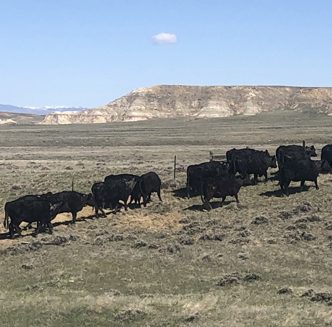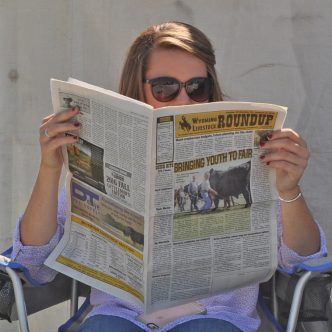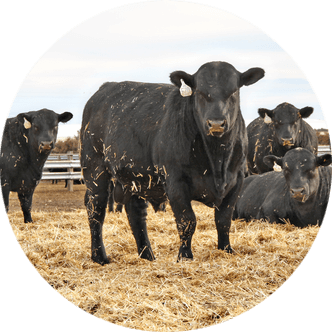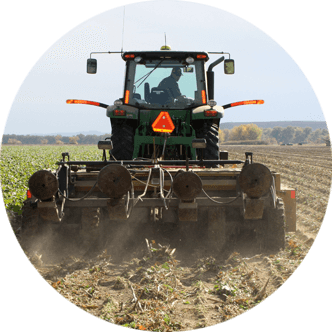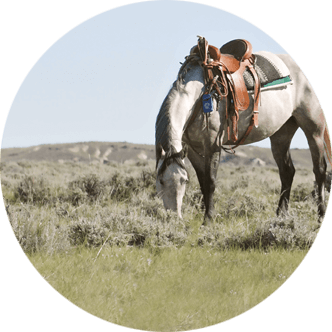Utilizing real horsepower: Lupher family uses teams of horses to ranch the old-fashioned way
The Lupher Ranch, perched high up in the Uinta Mountains, continues to operate generations later.
With much of the land homesteaded by Wes Lupher’s family, he and his wife Becky, along with their four children – Stormy, Logan, Madison and Hannah – now keep the family ranch alive.
“The ranch has been operating since the 1870s,” Wes says. “My dad James ‘Jim’ Lupher’s granddad established the homestead in the 1870s.”
“After I got out of school, I went to the U.S. Navy, and after six years I came home and went back to work on the ranch with my dad, where I’ve stayed,” Wes continues.
The Lupher Ranch is unique in that they still utilize traditional horsepower to manage their cattle and put up hay.
Many livestock producers in Wyoming used to feed their cattle in the winter with a team of horses, but the Luphers still do.
“My dad always worked horses, and I grew up driving a team to feed cows,” Wes says.
Not only do they feed their cattle with a team, they complete day-to-day operations and most of their haying with a team of American Brabants.
American Brabants
The Lupher family has utilized teams of horses to move material, plow and disk their hayfields and pull smaller wagons for special jobs around the ranch.
“Our teams work year-round,” Wes shares. “They have some kind of job in every season.”
“Ranchers can use horses for just about anything,” he adds. “There are a few ranchers around me who feed with teams of horses, but not very many anymore.”
The Lupher family used Shire draft horses in the beginning but switched to American Brabants a few years back.
Shire stallions, native to England, average slightly more than 17 hands in height and weigh as much as 2,000 pounds, whereas American Brabants are smaller working draft horses from European Belgian bloodlines.
“The biggest thing about Brabant horses is their durability,” Wes explains. “They hold their flesh easier and are more efficient. They are power in a small package.”
“Our horses average 15 to 16 hands tall and weigh in around 1,600 pounds,” he mentions. “With their body shape, these horses are easier to harness as they are short but stout and move with vigor when put to work.”
Wes adds, “These working horses are known for their calm, willing disposition, which allows them to be adaptive to all types of work including haying, logging and pulling wagons for feeding livestock and hauling other heavy equipment.”
Back in 2022, the Luphers hosted the American Brabant Association Fall Rendezvous, allowing producers to see other breeders’ operations while showcasing the American Brabant breed.
War wagon
Wes notes he needs the ability to move round bales to different locations depending on the weather and the terrain the cattle are in, and with his cattle scattered across the ranch, he needed a new way to feed, which required some ingenuity.
According to Wes, when feeding round bales further from the stackyard, they need to be pulled out of the stack and onto the wagon or sleigh which works well for second tier bales but not for bales on the bottom of the stack.
So, Wes and a good friend created the “war wagon” in hopes of making loading and delivery of a bottom round bale easier.
“We made a useful bale unroller for my horses, with a hydraulic squeeze and all,” he says. “It was a success, and I’ve fed thousands of bales with it now.”
Cattle business
“In the early years, my dad raised Herefords, but today we run Simmental and SimAngus cattle,” Wes shares. “In 1990, we put together a great artificial insemination program and have been focusing on raising good bulls and heifers.”
Wes and his family run cattle and put up their own hay each year on the ranch.
Haying with horse-drawn teams helps keep costs down when feeding large herds of cattle, plus it is a great way to break in a team, Wes says.
The Lupher family cuts around 300 to 400 acres of hay with their teams each year. This includes cutting with sickle bar mowers, racking hay with dump racks and stacking loose hay and bales.
Although the family does do some of the haying with a swather and baler, 80 percent of all haying each year is done completely by their teams of horses.
For more information on Lupher Ranch, visit @Lupher-Ranch on Facebook.
Melissa Anderson is the editor of the Wyoming Livestock Roundup. Send comments on this article to roundup@wylr.net.

